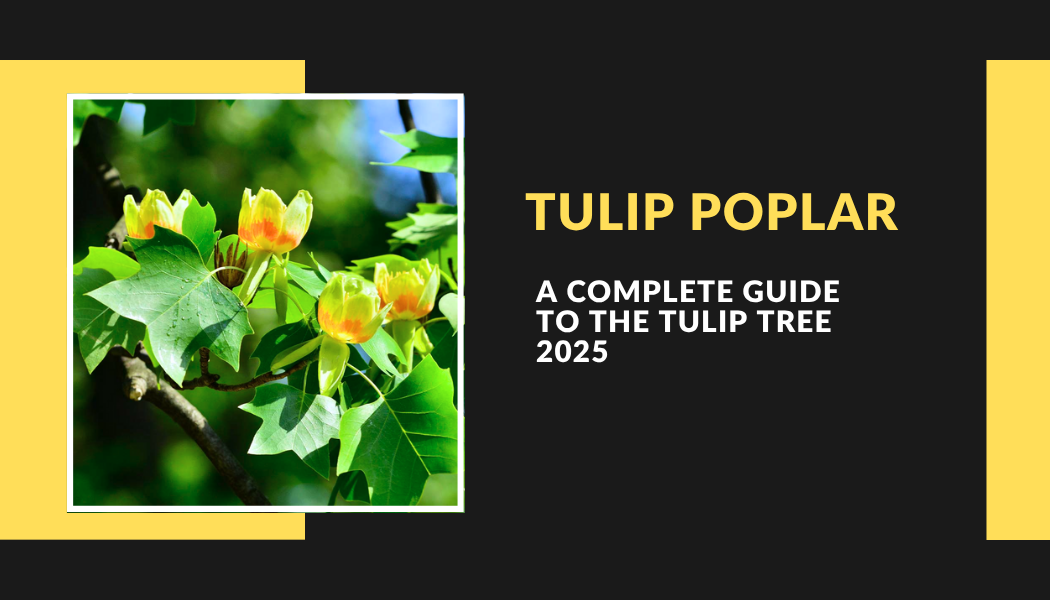Stunning indigenous trees with flower-shaped leaves and vibrant striped spring blossoms are Tulip Poplars. In autumn, their leaves become a lovely golden yellow. Rising at over 100 feet and living over 200 years, these huge, quickly expanding behemoths may become Furthermore, a tulipifera Tulip tree is quite an ancient tree originating in the era of the dinosaurs.
If you are reading this blog to know about this tree or if you are planning to plant it in your garden, then this is the perfect blog for you to explore about it.
A Brief Information About Tulip Poplar
| Common Name | Tulip Poplar |
| Latin Name | Liriodendron Tulipifera |
| Sunlight Requirement | Full Sun or Part Sun |
| Type | Spring Flowers |
| Height of the Plant | Tall trees (50-100’) |
This table provides you the most basic information about Tulip Poplar and its simple requirements, let’s move ahead in the blog to explore other details and also learn how you can plant it.
Why is it called Tulip Poplar?
Commonly known as Tulip Poplar, this tree derives its name from its leaves rather than its lovely blossoms. Many gardeners and homeowners love these leaves since they turn into a beautiful golden-yellow hue in the fall. In the spring, the tree bears tulip-shaped blossoms in yellow and green, hence it serves as a priceless nectar source for pollinators including honeybees.
These amazing trees link life to the ancient past of the planet. Tulip tree trees are more than merely beautiful; their origins go back to the age of the dinosaurs, hence reminding us of the ancient world in our own front yards.
Tips for Planting Tulip Poplars
Planting a Tulip tree calls for a few things to bear in mind. Tulip Poplars can grow up to 150 feet, therefore make sure you have adequate space to plant them. They also need well-drained soil and full or partial sunshine to grow, therefore be sure to arrange them in a place that gets lots of natural light. Finally, since they are intolerant to compressed soil and salty spray, use caution when planting one near a road.
Some garden plants die when a tree from one region is place in a very different place. Ordering a Tulip Poplar from an online store in Texas, for instance, might be appealing and planting it in Vermont, but the extreme Vermont winters might kill the tree.
In essence, the Tulip Poplar is a gorgeous tree best suit for making a statement if you have a lot of space. Its unique appearance, quick development, and ability to thrive in the appropriate surroundings make it a great choice for any garden or park.
We hope all the information about Tulip Poplar that we have offered you in this blog has been useful and helpful to you and you were able to take care of your plant. If you wish to learn more about Tulip or some other plants and about their growing tips, you can check out the website Yourhomify which will offer you all the details that you are looking forward to.
Also Read – https://blogrify.com/


